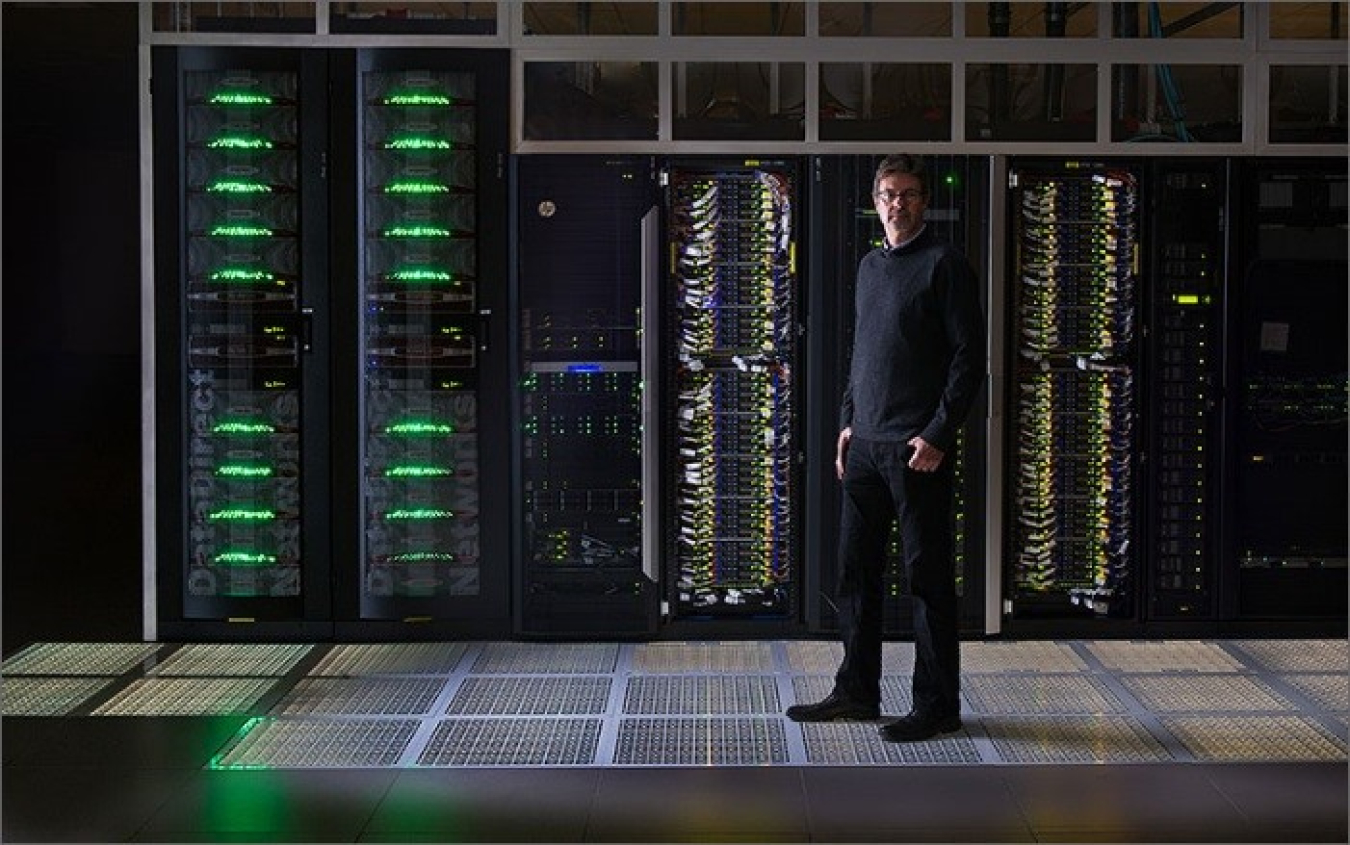
Photo courtesy of Dennis Schroeder | National Renewable Energy Laboratory.
The job of lead computational scientist is an advanced position in bioenergy, in the engineering and manufacturing career sub-sector. Job seekers with engineering and manufacturing backgrounds or a career in engineering could consider this type of advanced bioenergy job.
Lead computational scientists provide expert technical input to create new, and improve existing, open-source computational-modeling tools, as well as conduct original research that results in major scholarly publications. People in these positions may have careers in bioenergy computational science.
Lead Computational Scientist
| Alternate Title(s) | Supervisory, Computational Scientist; Postdoctoral Researcher; Computational Modeling |
| Education & Training Level Description | Doctorate in Computer Science, Computer Science and Engineering, Computational Biology, Physics, Applied Mathematics, or Engineering. |
| Experience | 10+ years |
| Job Skills |
|
| Job Profile | The logistics and planning of a large-scale domestic-based bioenergy production system requires skilled individuals who are able to apply techniques from computer science, informatics, data management, modeling, visualization, applied mathematics, and statistics to explore solutions to complex, industry-relevant problems that would otherwise prove challenging through traditional experimentation alone. From sustainable feedstock development and logistics to improving biomass to biofuel conversion efficiency, computational scientists play an important role in the bioenergy sector. Modeling, simulation, and visualization are useful tools that complement experimentation and help save time and money. For example, computational-based tools can help design high-performance biomass deconstruction enzymes, investigate the properties of plant cell walls to improve enzyme binding affinity, enhance microbial metabolic pathways for the conversion of sugars to fuels and high-value products, predict catalyst performance under realistic conditions, and optimize the performance of reactors used in biomass conversion. They can also provide the data needed to make important management decisions. Sustainability analysis tools like WATER (Water Assessment for Transportation Energy Resources) and LEAF (Landscape Environmental Assessment Framework) help scientists, landowners, and technology developers make key decisions that enhance the environmental benefits of bioenergy. At the senior or supervisory level, lead computational scientists would be expected to provide expert technical input to create new, and improve existing, open-source computational-modeling tools, as well as conduct original research that results in major scholarly publications. A Ph.D. in computer engineering or a related field with a focus on computational modeling is highly recommended. Individuals at this level should have demonstrated experience performing modeling and simulation studies that inform and compliment experimental projects. The candidate is also expected to have a strong background in the physical and biological sciences with an emphasis on bioenergy applications. |
More Advanced Engineering and Manufacturing Jobs in Bioenergy
Related Bioenergy Career Resources
Bioenergy Career Exploration Wheel

